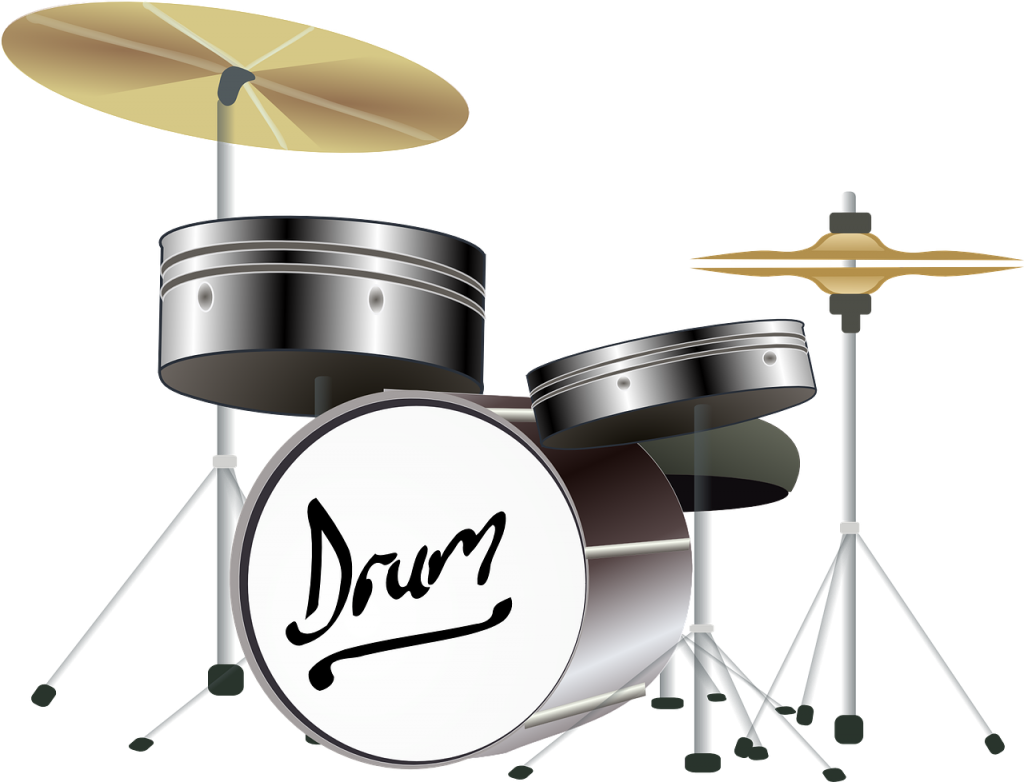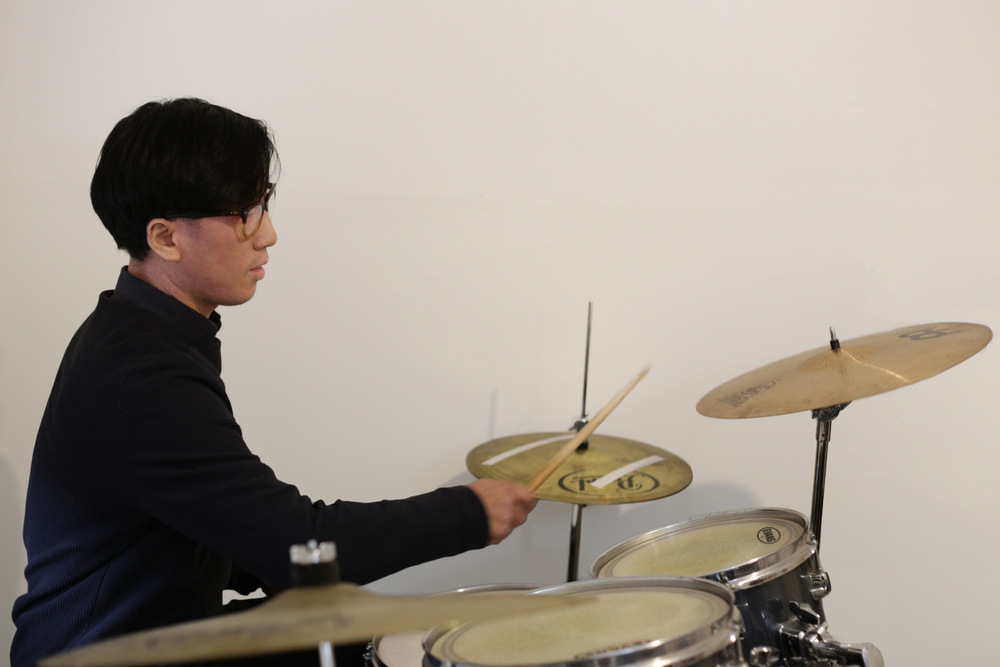The drum kit is a collection of instruments including drums and cymbals and other additional instruments that are grouped together and played by one musician. The musician typically uses drum sticks in his hands and pedals at his feet to strike the various instruments. The drum kit emerged in the 1800s when a musician in an orchestra was required to play more than one instrument, most often the cymbals, triangle, and bass drum. Because the budget for musicians in many stage shows and theaters could not afford to hire multiple musicians they drum kit was developed to enable one musician to play many. When Ludwig & Ludwig Co. patented the first bass drum pedal in the early 1900s the modern drum kit became possible.
A standard modern kit (for a right-handed player), as used in popular music and taught in music schools, contains:
- A snare drum, mounted on a stand, placed between the player’s knees and played with drum sticks (which may include rutes or brushes)
- A bass drum, played by a pedal operated by the right foot, which moves a felt-covered beater
- One or more toms, played with sticks or brushes (usually three toms: rack tom 1 and 2, and floor tom)
- A hi-hat (two cymbals mounted on a stand), played with the sticks, opened and closed with left foot pedal (it can also produce sound with the foot alone) One or more cymbals, mounted on stands, played with the sticks

